
The best thing about Diablo Immortal is that it's a fun, professionally crafted action RPG befitting the Diablo name. The new Activision Blizzard game, launching on iOS and Android on Wednesday and Windows PCs on Thursday, immediately impresses as one of the better smartphone-first ARPG games on the market. And my 10 hours in its universe have allayed my previous fears about its production values.
The worst thing about Diablo Immortal is its economy. My pre-release testing of the final game was marked with menus and in-game characters alike selling me new types of "orbs," "stones," gold, and other confusing microtransactions. At best, the game can be enjoyed despite this nonsense.
But the bean counters at Activision Blizzard aren't willing to offer a one-time purchase in Diablo Immortal for fair, nag-free adventuring. (Worse, as of press time, the publisher appears to be doubling down on a famous 2012 fiasco.) That's doubly tragic because the game is otherwise a fun, smartphone-friendly option for addictive dungeon delving—which leaves me stuck between recommending a perfectly fine smartphone adventure and warning about its ickiest aspects.
Driving a Rift between fans
I'll start by getting to the microtransaction content since at least two nations have banned Diablo Immortal from their marketplaces ahead of its launch. The game indeed includes "loot boxes" that run afoul of regulations in the Netherlands and Belgium, though Diablo Immortal's system differs from popular examples like EA Sports' card packs or Fortnite's "llama" system.

Everything below relates to purchasing options related to Diablo Immortal's gameplay and mechanics, not cosmetics. If you like the idea of paying $10 to $15 to dress your favorite warrior in outlandish garb, that's here as well. I believe those kinds of purchases prey upon children who equate flashier cosmetics in social video games with real-life social clout, but that's tame compared to some of the stuff I've seen in Diablo Immortal.
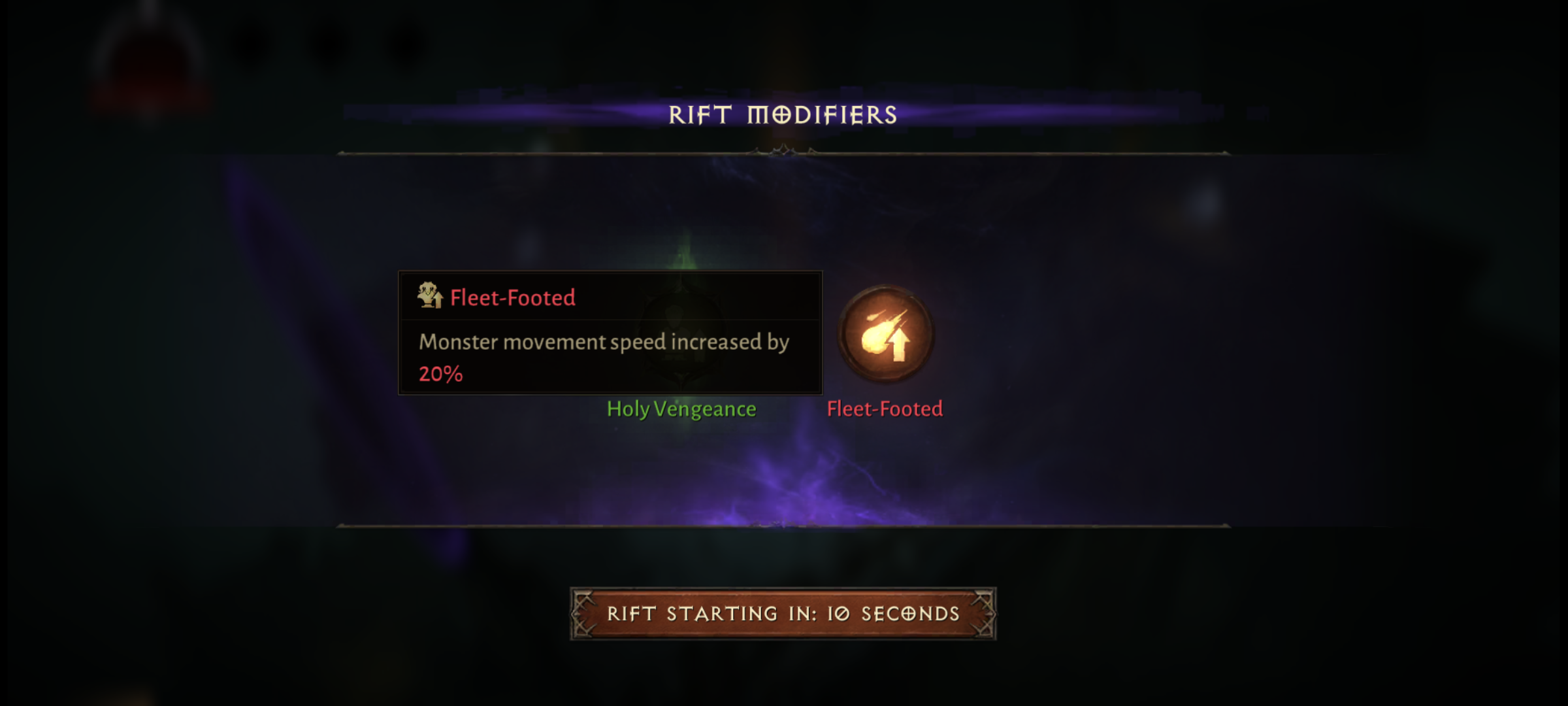 On their face, Elder Rifts (no, not "Elden Rings") seem like classic Diablo stuff. They add Interesting modifiers to a randomly generated dungeon run, and they reward cool, unique loot. But...
On their face, Elder Rifts (no, not "Elden Rings") seem like classic Diablo stuff. They add Interesting modifiers to a randomly generated dungeon run, and they reward cool, unique loot. But...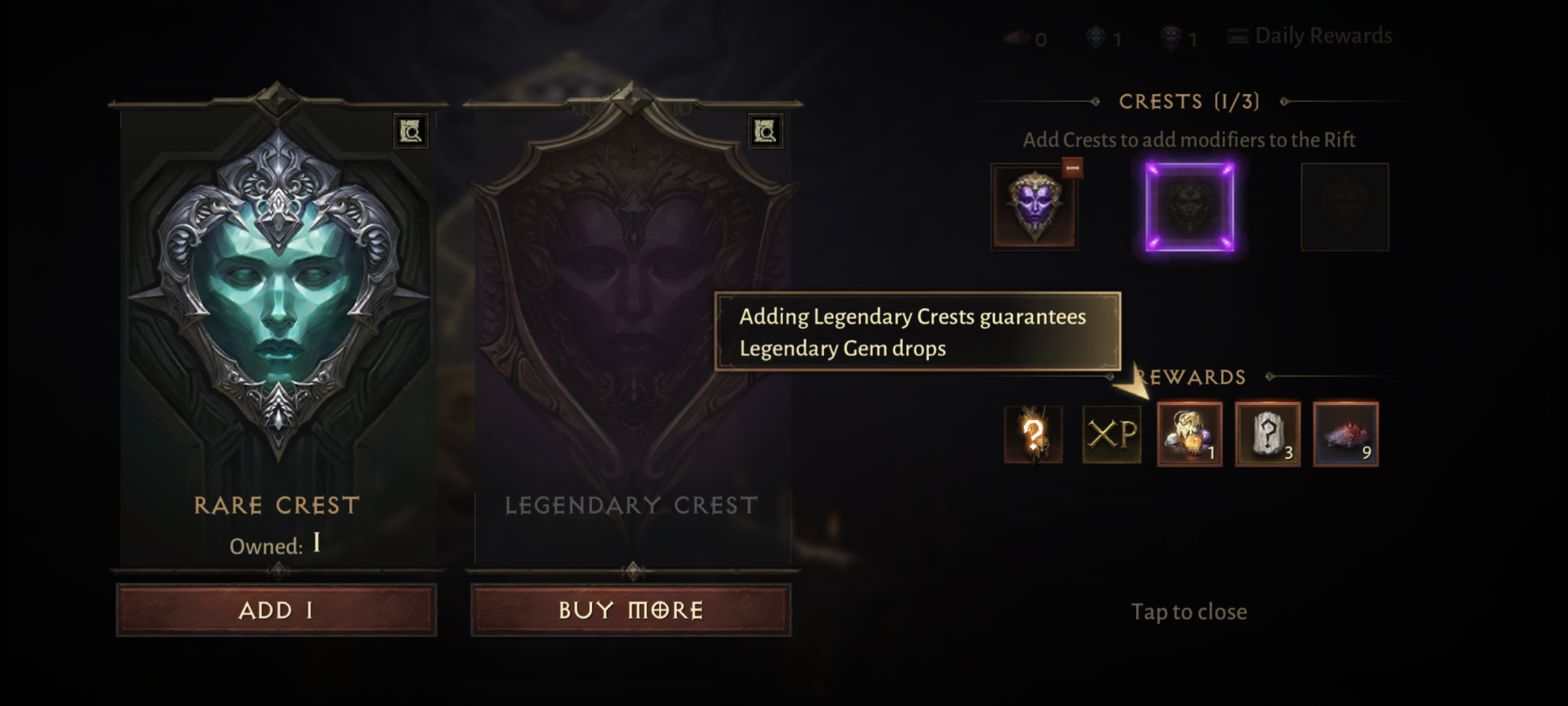 ...the best loot requires spending "legendary crests," which either take forever to grind via in-game mechanics or can be bought instantly with real-world cash.
...the best loot requires spending "legendary crests," which either take forever to grind via in-game mechanics or can be bought instantly with real-world cash.
The game's linear, Diablo III-like introduction eventually leads players to a hub town, and its storefronts advertise the game's full slate of in-game purchase opportunities. The loot-boxiest of these is the "Elder Rift," which is a randomly generated dungeon delve. Players can "guarantee" the number and quality of each dungeon run's rewards based on the number and type of "crests" they dump into its entrance. (When I say "rewards," I mean stuff that your character can equip for special offensive or defensive abilities. The first one I earned gave all of my attacks a 10 percent chance to add an electric spark that chained to nearby foes. Stuff like that.) Lower-level crests can be earned in-game, while "legendary" crests must be purchased with real-world money (after players are forced to burn through one free legendary crest).
Imagine a loot box that requires a 5–10 minute spike in challenge to see the randomly awarded loot inside, and you've got legendary crests in a nutshell. To Activision Blizzard's credit, if a player elects to use a crest and then either fails an Elder Rift challenge or gets disconnected from the game's always-on servers, the crest is refunded.
The F2P equivalent of hot dogs and buns
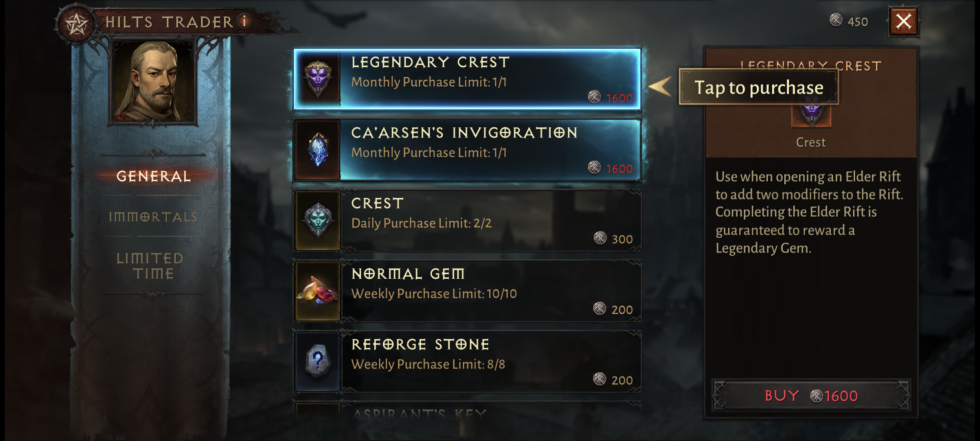
Crests are just one available currency that is split between free and paid versions. This game's variety of confusing currencies resembles the crap I detest in other bottom-of-the-barrel F2P fare. Worse, whenever you're short on a currency to do something in Diablo Immortal, Activision Blizzard offers a tappable tooltip icon that tells you how to earn the item or crafting element somewhere in normal gameplay... or you can simply buy it instantly.

Activision Blizzard tells you some of this stuff can be crafted, as if to insist that there's a "fair," RPG-styled path to these power-ups. But such crafting requires materials that take a long time to collect during normal gameplay. And you can only craft a certain number of these per week or month. Want it more quickly or with fewer restrictions? Cha-ching. The game also includes a "platinum" currency that appears to require the paid "orb" currency to acquire. ("Spend 500 orbs to get 5,000 platinum pieces; spend $9.99 to get 600 orbs"—the F2P equivalent of hot dogs and buns.)
 All of this stuff requires paying $9.99 per month. Worse, the four items on the left must be claimed on a day-by-day basis during your subscription period. Miss a day? You miss the item.Activision Blizzard
All of this stuff requires paying $9.99 per month. Worse, the four items on the left must be claimed on a day-by-day basis during your subscription period. Miss a day? You miss the item.Activision Blizzard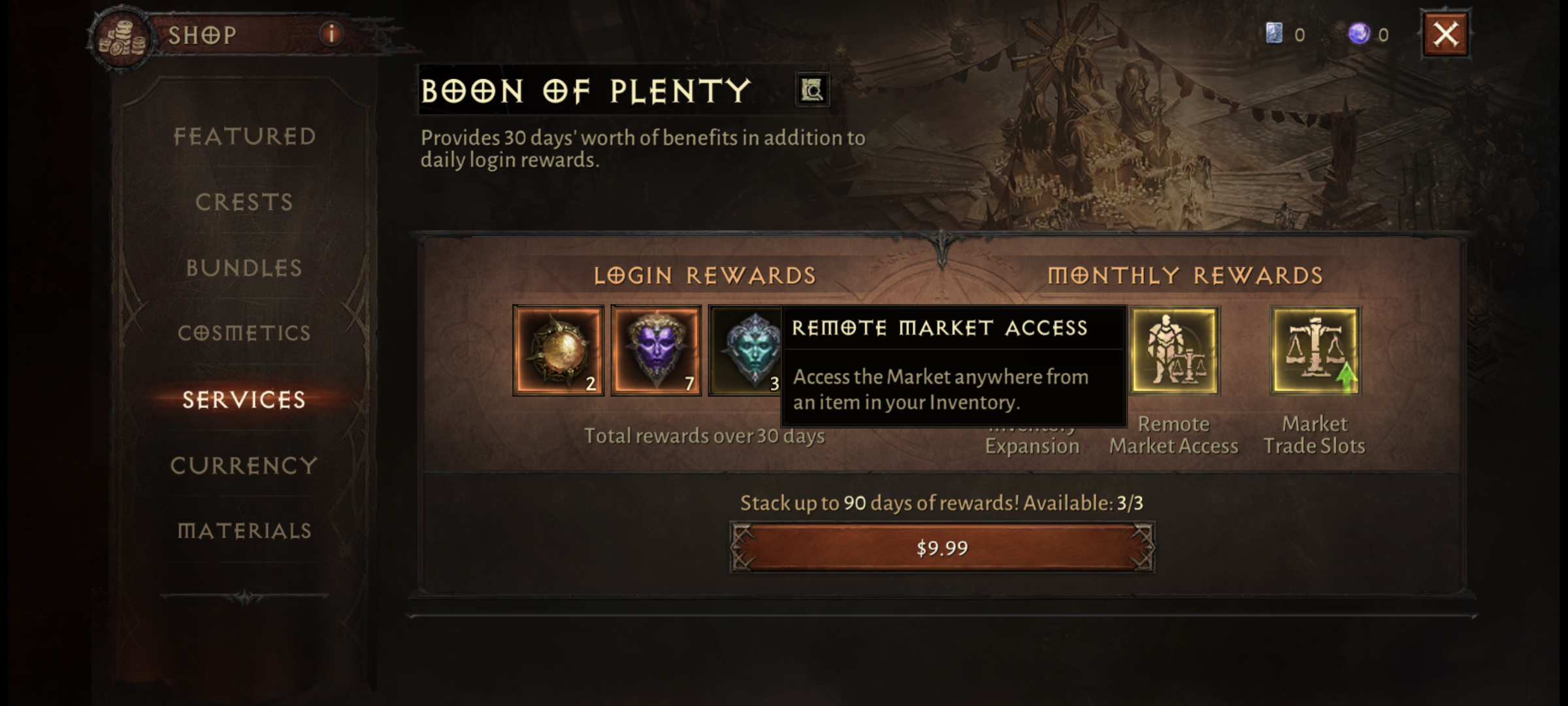 A tooltip about how "market" access works if you buy into this subscription package.
A tooltip about how "market" access works if you buy into this subscription package.
Worse than that is the game's "Boon of Plenty" microtransaction package, which currently costs $9.99 per month and must be re-upped every month for its benefits to kick in. These include a more extensive inventory for your active character's loot and increased perks for the game's player-to-player item sales marketplace. You also have to log in every day to claim your slew of in-game items, as they're treated as a daily login bonus. Miss a day? Too bad; the thing you paid for vanishes.
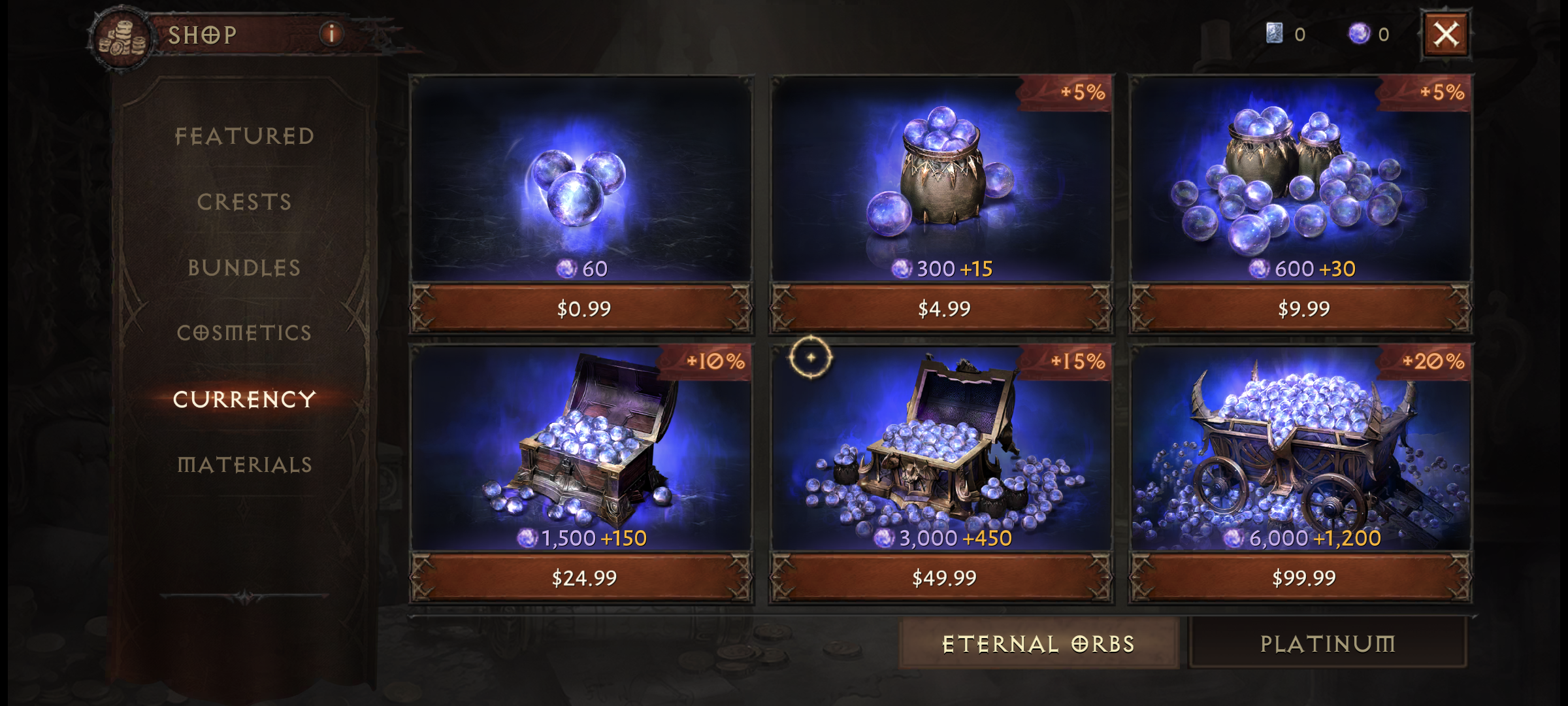 Use cash to buy orbs.
Use cash to buy orbs.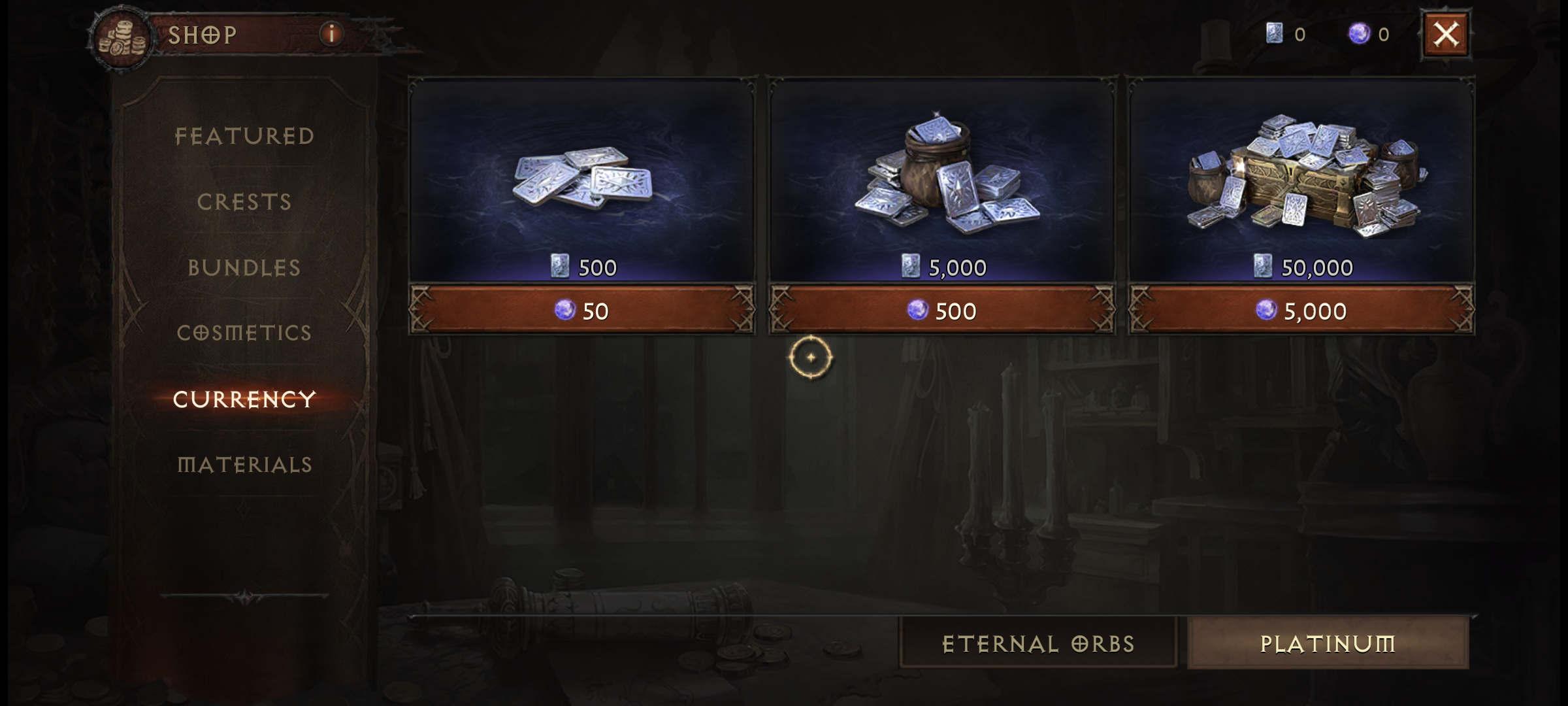 Then use orbs to buy platinum, which you'll primarily spend at the "market." That's the name of this game's auction house, which unlocks roughly six hours into a character's progression.
Then use orbs to buy platinum, which you'll primarily spend at the "market." That's the name of this game's auction house, which unlocks roughly six hours into a character's progression.
I'm not sure what's worse: denying paying customers something they paid for or apparently re-creating the cursed Diablo III auction house. Diablo Immortal's aforementioned "player-to-player item sales marketplace," simply dubbed the "market," was not active ahead of the game's public launch, but its menus and reliance on the paid "platinum" resource resemble Diablo III's disastrous take on the concept. Lest you forget, Blizzard spent a lot of time undoing and apologizing for the auction house. (Activision Blizzard representatives did not immediately answer questions about Diablo Immortal's market ahead of this article's publication.)
Solid on gamepads, tweakable on touchscreen
In better news, since the game's microtransaction store wasn't active in the preview period, I can confirm that Diablo Immortal opens with unrestricted, authentic ARPG fun—for its first 10 hours, at least.
I'm particularly delighted by Diablo Immortal's addition of gamepad support, which wasn't live during the game's closed beta period. The game has been built around virtual gamepad controls, so I'm glad this part was straightened out before launch. Sync a gamepad to your iOS or Android device and you can expect any ability in your arsenal to map to a button press or a "right joystick" toggle to aim dashes, spells, or leaps. The default controls feel as responsive and sensible as those in Diablo III's console version.
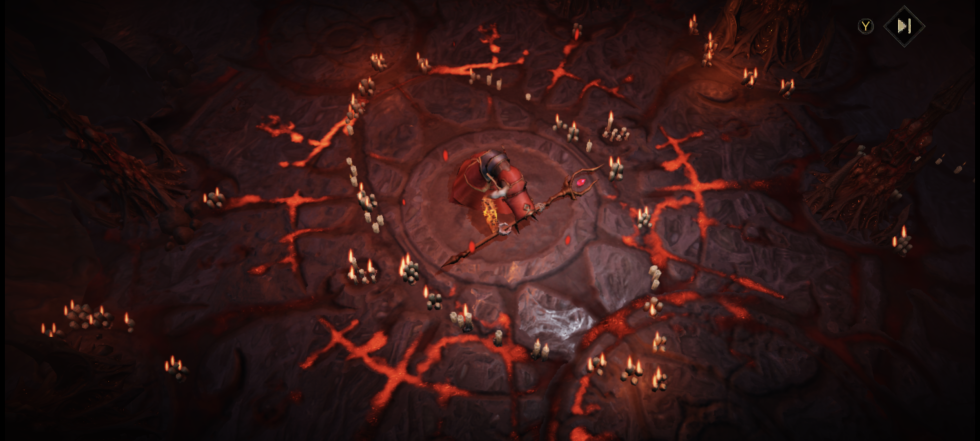
Even better, the control remapping available for gamepad and touchscreen users is vast. Want to remap every ability to whatever gamepad buttons you want? Easy peasy. Want to tweak touchscreen options like showing ability-cancellation methods, a visible indicator for your primary attack, or how the "skill wheel" is positioned and activated? Go ahead. I still prefer a gamepad for this game's frantic action, but I've generally had a fine time during non-gamepad occasions when I wanted to make campaign progress on a bus ride.
The game begins in "baby's first Diablo" fashion. Your hero is ridiculously overpowered for the first few hours of experience-point accumulation, and your first quests' linear paths are marked with a visual "footsteps" indicator. (I've yet to figure out how to disable this beyond turning off "tracking" on my quest log; I'd rather keep quests tracked while only receiving a vague compass bearing for where to go next. That's not a deal-breaker, just a quibble.)
Good news for 60 fps loyalists, bad news for smartphone batteries
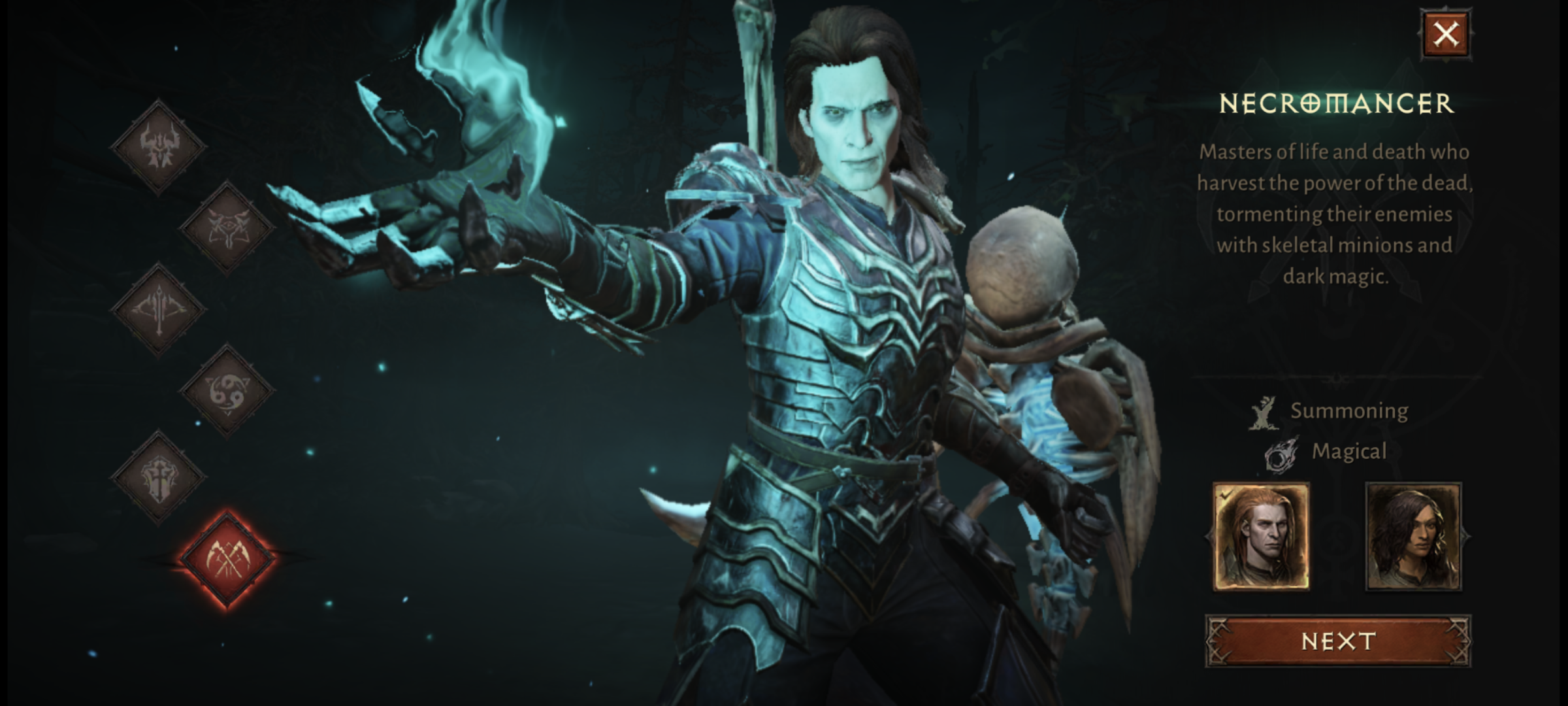 Class breakdown, as presented to Diablo Immortal players. First, the Necromancer.
Class breakdown, as presented to Diablo Immortal players. First, the Necromancer.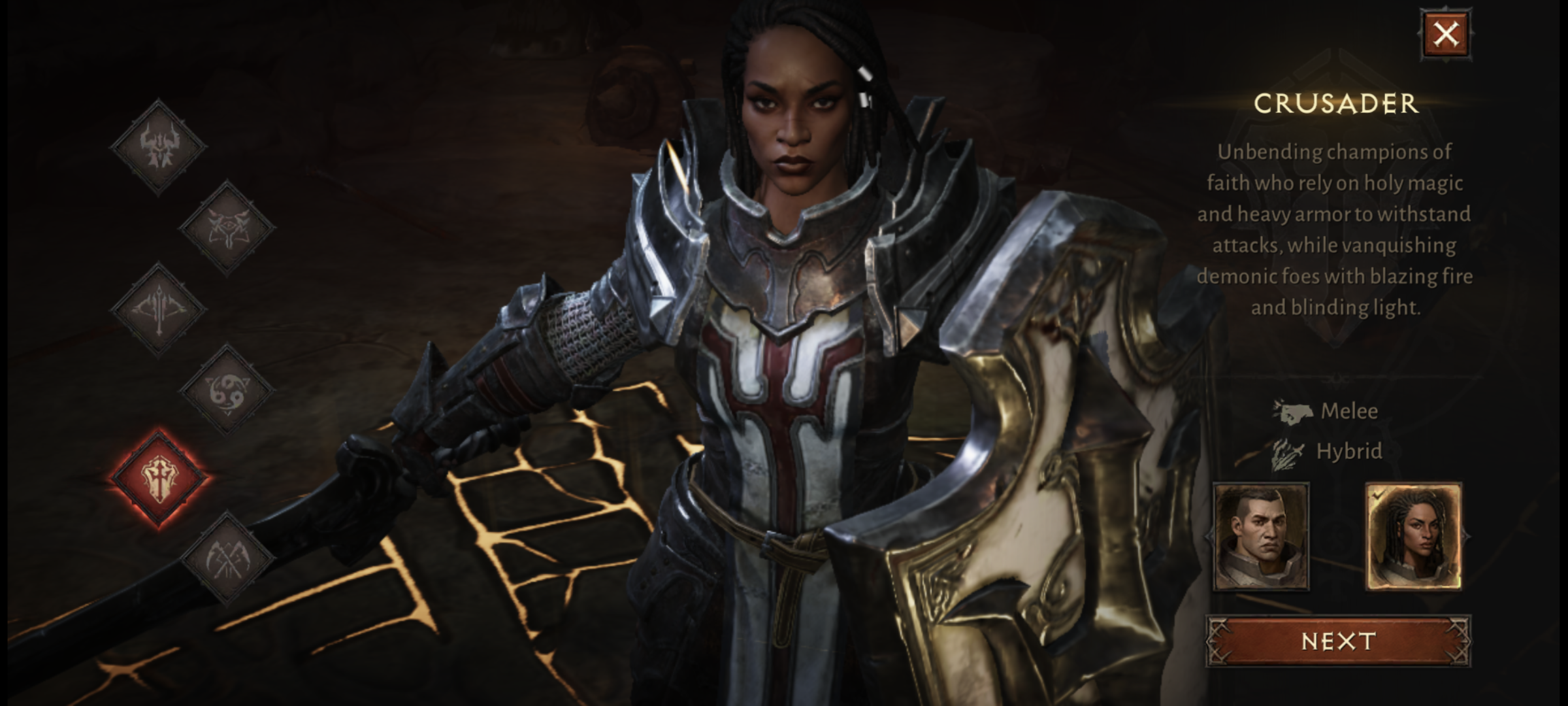 The Crusader.
The Crusader.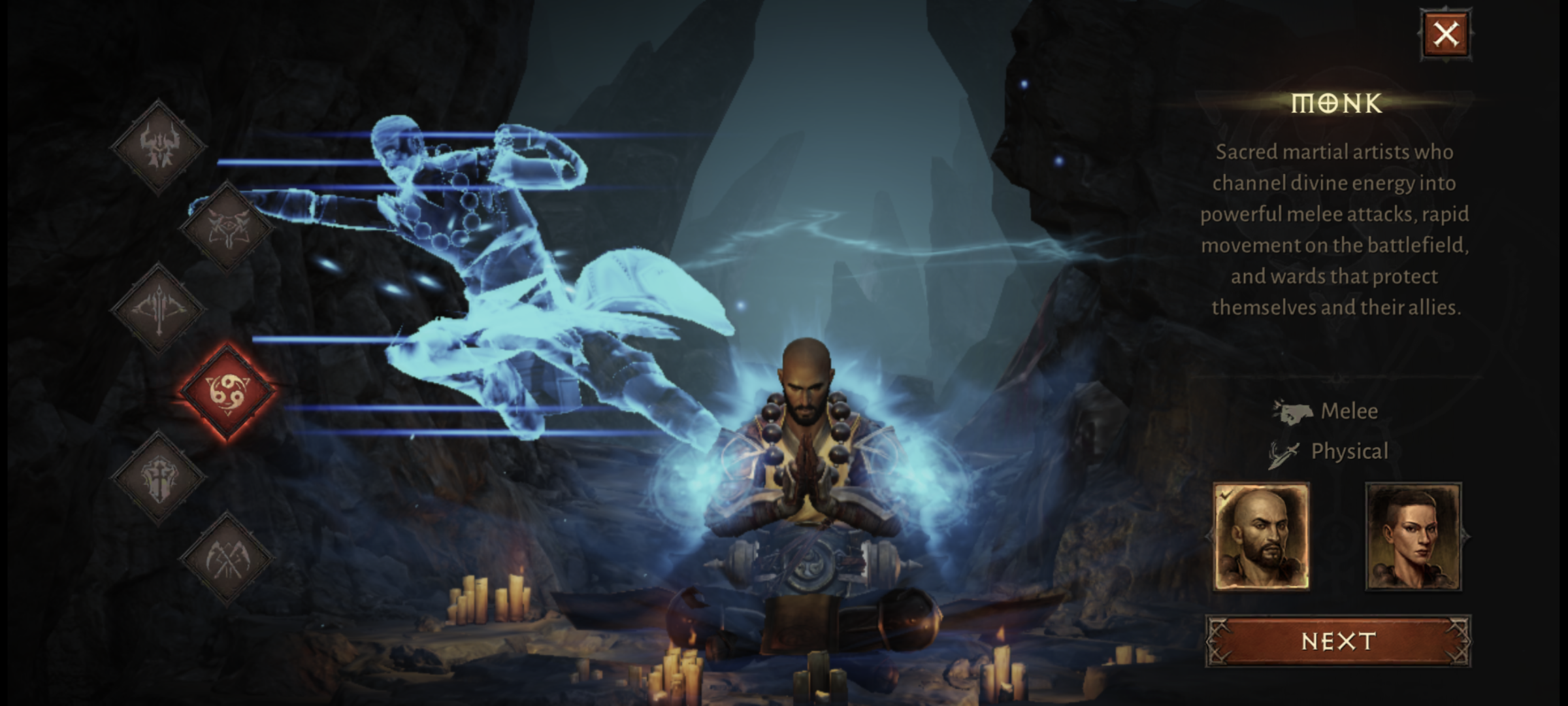 The Monk.
The Monk.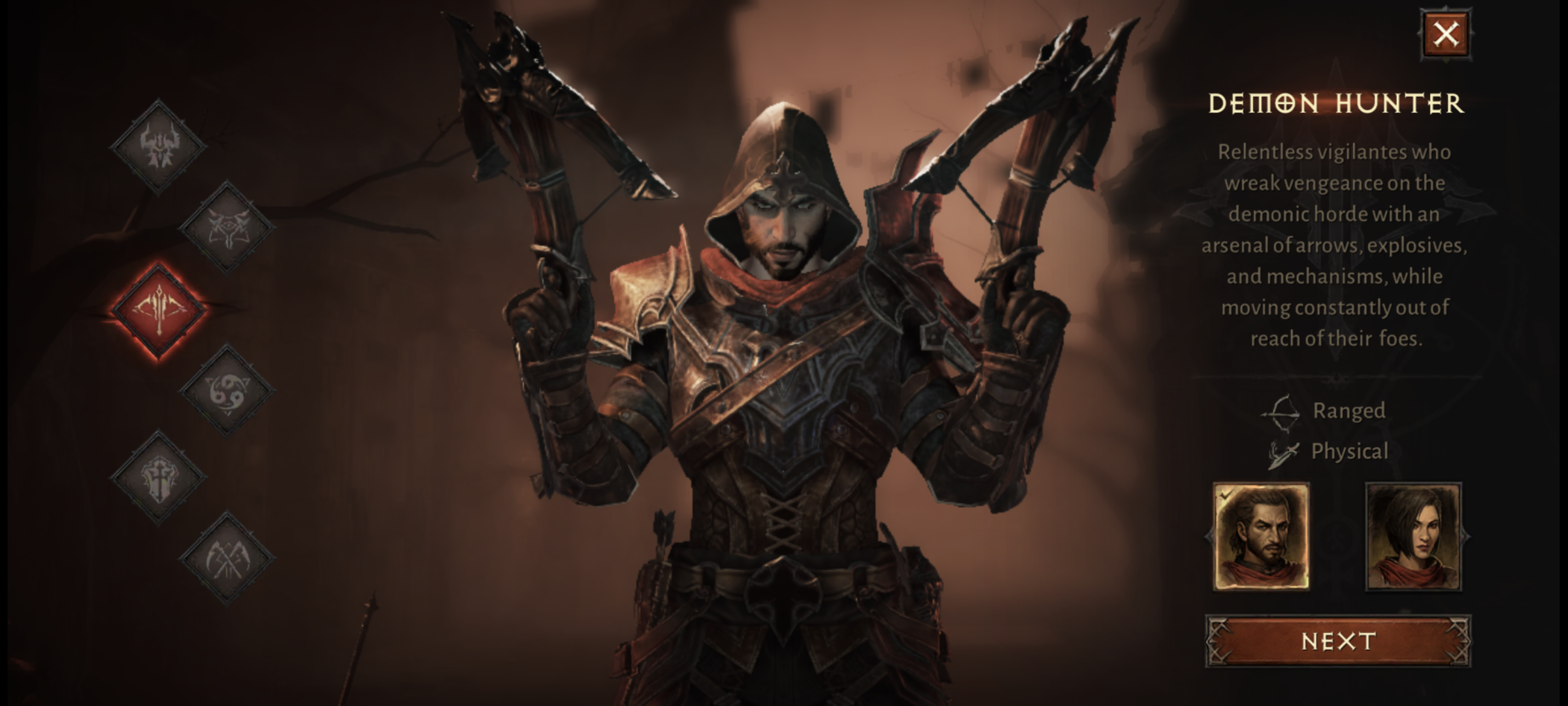 The Demon Hunter.
The Demon Hunter.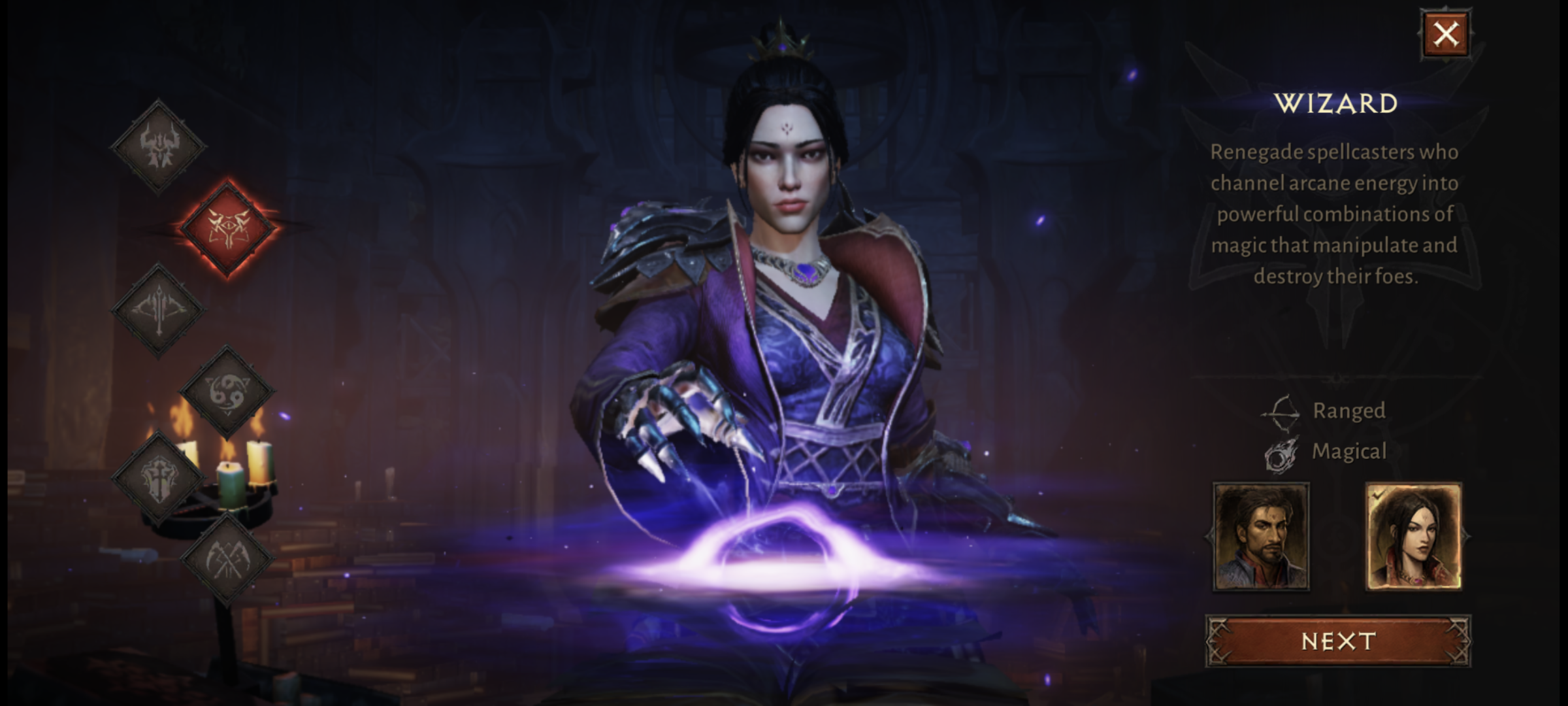 The Wizard.
The Wizard.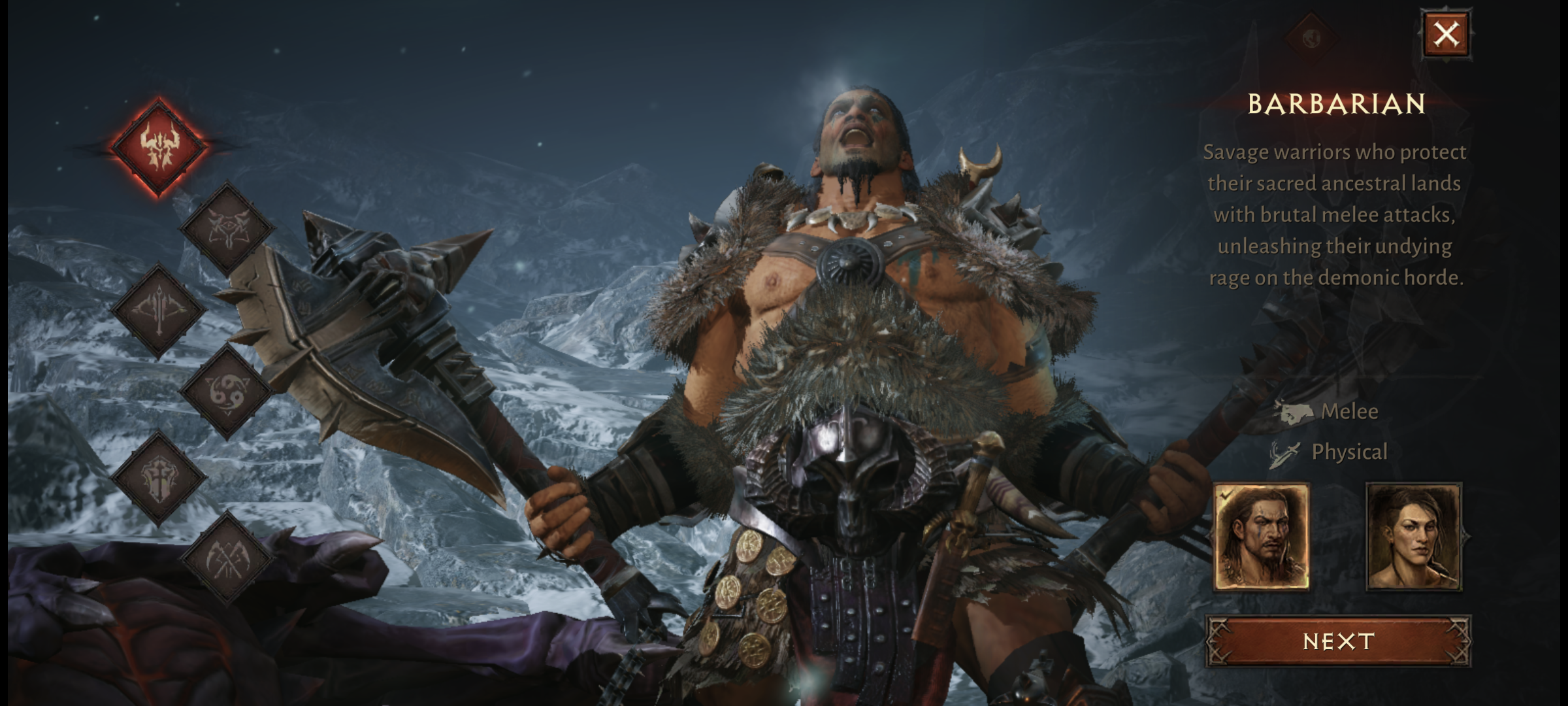 And the Barbarian.
And the Barbarian.
Diablo Immortal includes six classes, and I focused my limited preview time on the tanky, melee-focused Barbarian, who has generally been a blast to control. The Barbarian's attacks look and feel satisfyingly brutal, even on a small smartphone screen. Diablo Immortal does a good job of highlighting targeted enemies with bright-yet-limited borders so players can keep track of where everything is during frantic encounters.
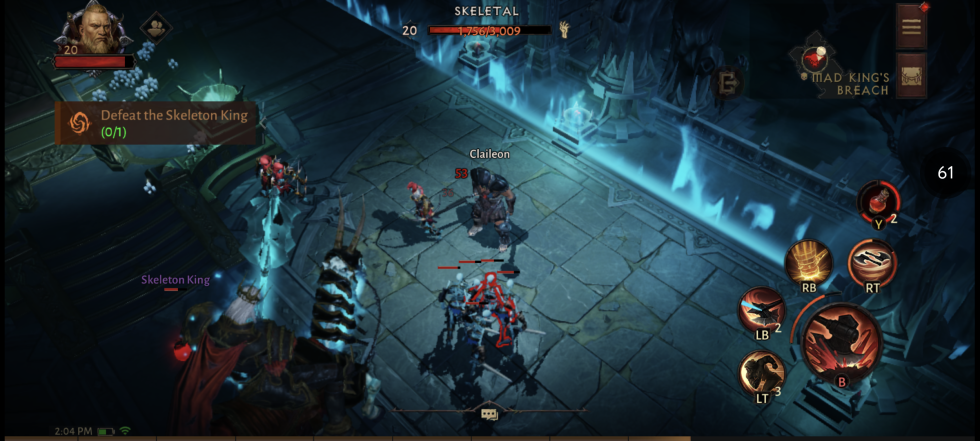
Zombies, wolves, imps (and their obnoxious shaman friends who bring dead allies back to life), and more: The monster variety of older Diablo games is maintained to great effect, while bosses mix up spells, bullrushes, area-of-effect blasts, and more to force players to react accordingly.
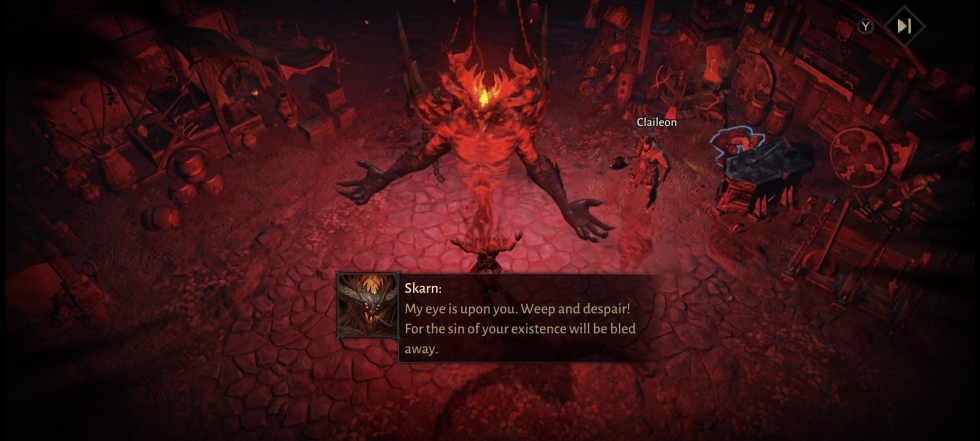
The game's design vision favors the vibrant-yet-morose Diablo II Resurrected over the colorful Diablo III, and the results look handsome on my primary testing device, a Google Pixel 6. If you find the game looks too dark on your screen, you can crank up in-game brightness as you see fit, even if it mutes the game's default brooding aesthetic.
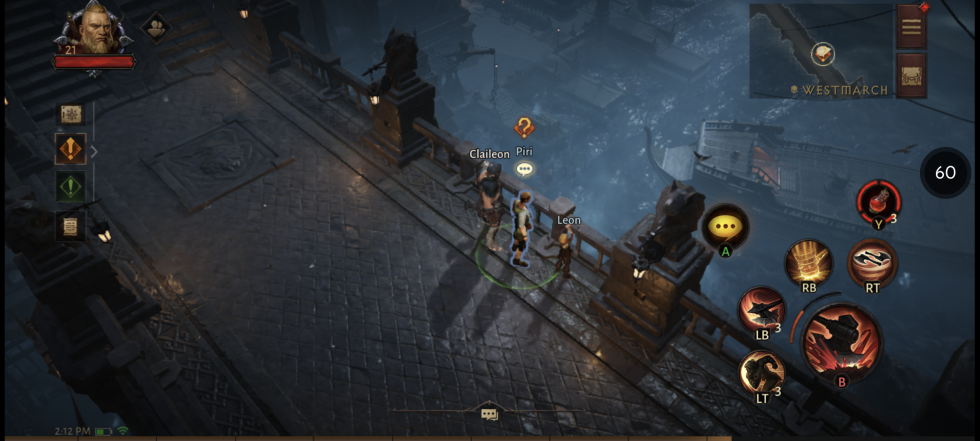
And while the game looks fine enough at its 30 fps default, switching to 60 fps is easy (even though Diablo Immortal offers a stern "are you sure about draining your battery?" warning). The graphics menu also includes toggles for a bunch of visual effects, a handy in-game resolution slider, and an optional sharpening filter. I found that 60 fps, combined with the game's lowest resolution, sharpening enabled, and "medium" settings across the board was my preferred way to play since a doubled frame rate means much better input latency.
Fewer skill trees, more straight-up fun at cafés
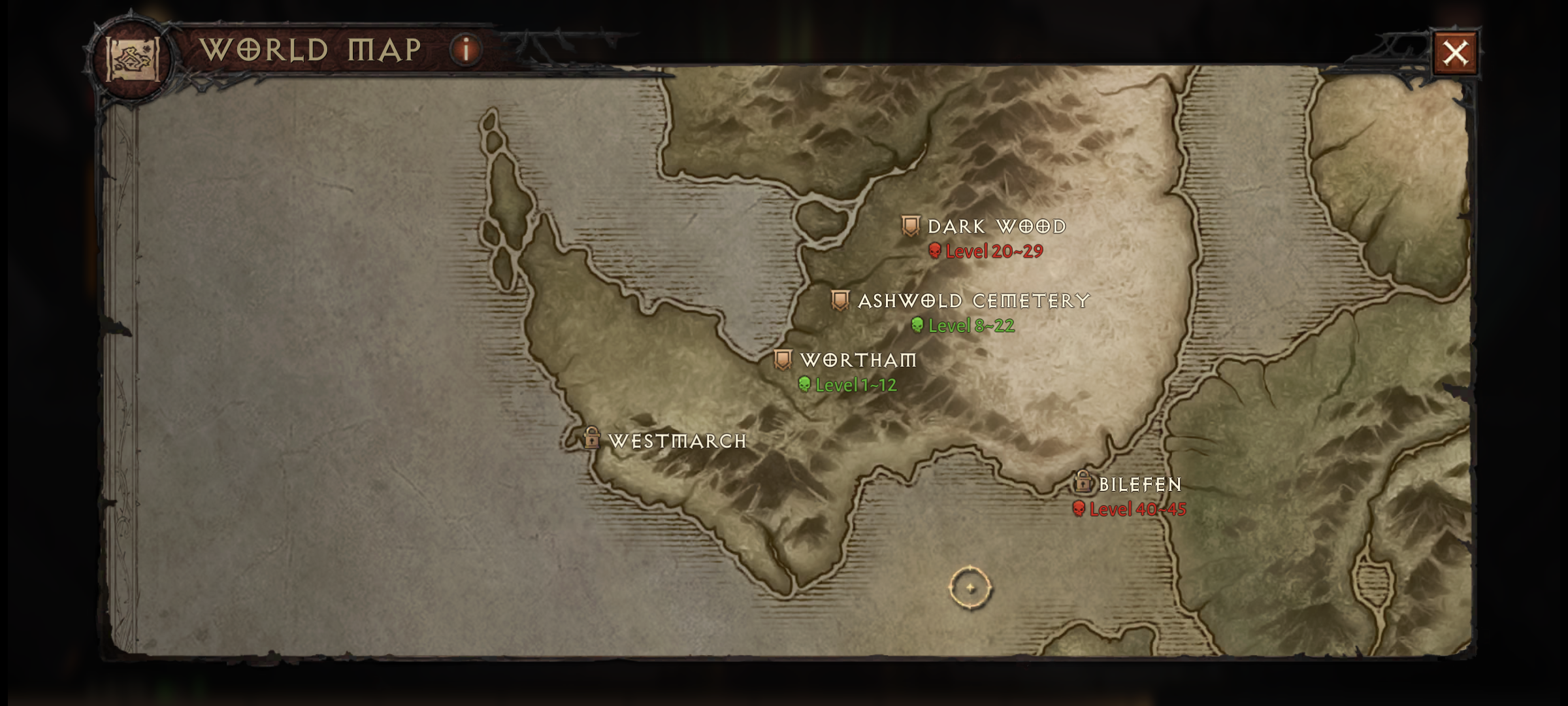 A tighter zoom on the opening zone's map.
A tighter zoom on the opening zone's map.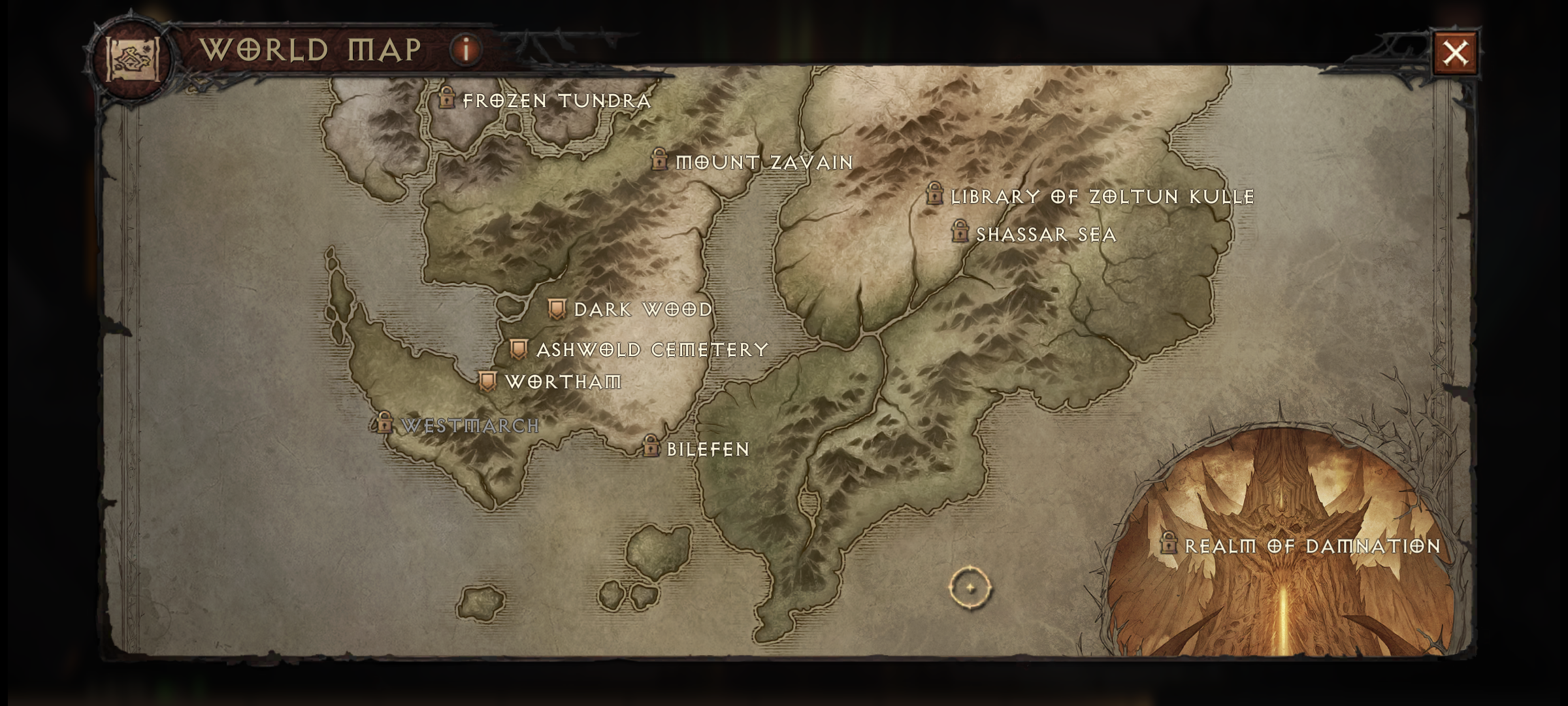 Zooming out to see the number of locales built into the game thus far. You can go into a pre-game menu and elect to download each zone's specific content, should your smartphone have enough storage to spare.
Zooming out to see the number of locales built into the game thus far. You can go into a pre-game menu and elect to download each zone's specific content, should your smartphone have enough storage to spare.
The campaign's difficulty ramps up gradually. Thus far, I'm finding my Barbarian character has what I need to contend with waves of mobs by myself. I also have enough skills to mix up my loadout if I want to party up with other players and better fit a tank archetype. Thus far, online matchmaking with people on my "friends" list and random online strangers has gone smoothly. I hope this matchmaking quality persists once the game's servers open up globally, especially once smartphone and PC players connect via cross-platform compatibility.
Sadly, Activision Blizzard kept the game's PC version under wraps during the preview period. While I expect that this version, downloadable via the Battle.net launcher, will run smoothly enough, I am confident that the game's emphasis on smartphone and gamepad compatibility will leave hardcore keyboard-and-mouse players underwhelmed. Diablo III is a richer experience with years of updates and ladder-based progression under its belt, along with much deeper skill-tree customization options. Diablo Immortal doesn't push the series into new mechanical directions; instead, it opens up access on a F2P basis and streamlines character fine-tuning.
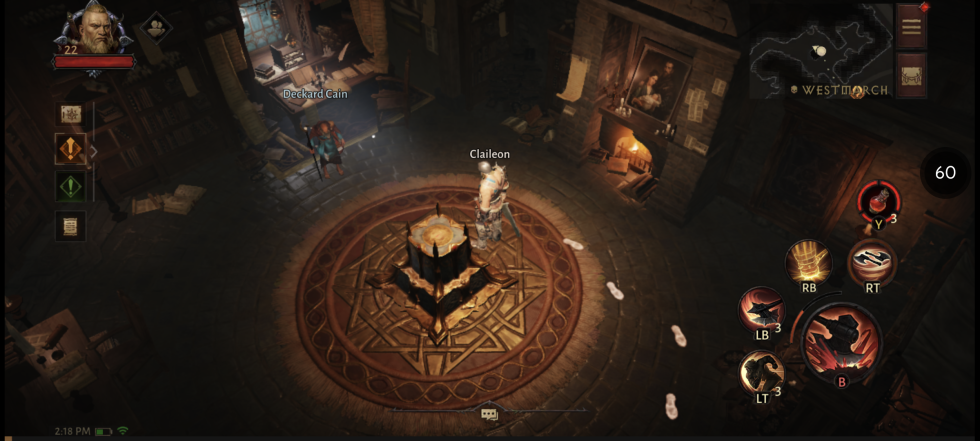
So far, that's OK with me. I could see myself investing in this game's balance between Diablo-worthy combat and smartphone portability. Whether I'm near my gaming PC or my phone, I'll have a wide pool of people to invite to play with me, thanks to that lower barrier for entry. I also appreciate the effort put into this game's campaign, plot, and voice acting, which are all on par with what we got in Diablo III. (I kinda wish the Diablo series would give the character of Deckard Cain a rest, but longtime voice actor Michael Gough nails him once again, at least.)
And as my time ran out and the preview period's servers shut down, prepping for a full character wipe ahead of today's public launch, I found myself losing valuable writing time to the addictive gameplay. I grew closer to characters like Charsi while assisting them on the main questlines. I regularly skipped the visible "footsteps" path toward main objectives in search of additional battles, where I usually found crowds of special enemies or one-off dungeon dives. And I began to savor the new "bestiary" system, which organically encourages players to engage in random enemy encounters that they might otherwise skip.
“I’m not running a charity here”
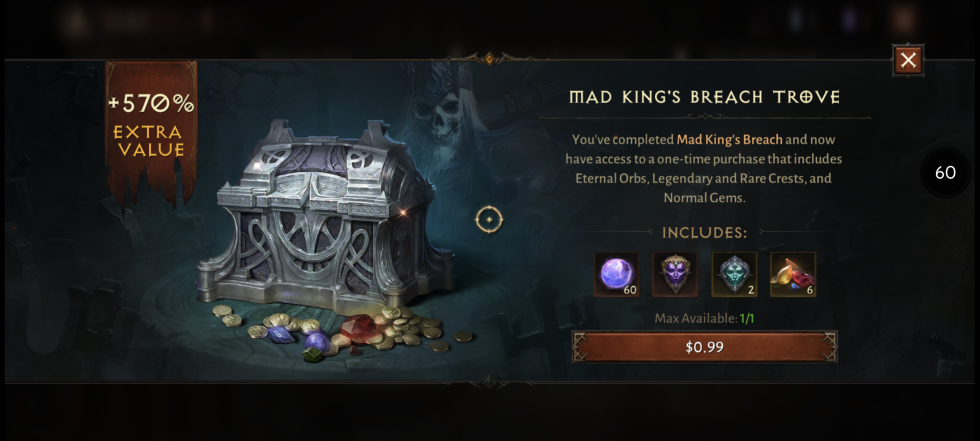
But as one of Diablo Immortal's shopkeepers says, perhaps too bluntly, "I'm not running a charity here." How much further will I get before the game makes free gameplay a headache? At that point, will I find myself eager to cough up money for crests so that my friends and I can pick up crucial loot to keep the fight going? Or will I be happier returning to the comfortable likes of Diablo II Resurrected or Diablo III, smartphone convenience be damned? (Or, heck, should I just wait for the F2P rival Path of Exile's smartphone port?)
This game's aggressive sales pitches for microtransactions leave me pessimistic that Activision Blizzard will relent in the weeks to come. This company already went through the Diablo III auction house debacle, and it wants to do it again! Good luck with that. At this point, sadly, it looks like market forces, as opposed to fan outcry, will determine how much Activision Blizzard will backtrack. As a longtime Diablo fan, I would love to see this game get consumer-friendly updates that make its eventual endgame feel fair. Otherwise, the game's ample selection of classes, abilities, and monsters will careen straight to the "uninstall" option.
https://arstechnica.com/gaming/2022/06/diablo-immortal-impressions-a-good-smartphone-game-saddled-with-f2p-nonsense/
2022-06-01 12:00:23Z
CBMidGh0dHBzOi8vYXJzdGVjaG5pY2EuY29tL2dhbWluZy8yMDIyLzA2L2RpYWJsby1pbW1vcnRhbC1pbXByZXNzaW9ucy1hLWdvb2Qtc21hcnRwaG9uZS1nYW1lLXNhZGRsZWQtd2l0aC1mMnAtbm9uc2Vuc2Uv0gEA
Bagikan Berita Ini














0 Response to "Diablo Immortal impressions: A good smartphone game saddled with F2P nonsense - Ars Technica"
Post a Comment